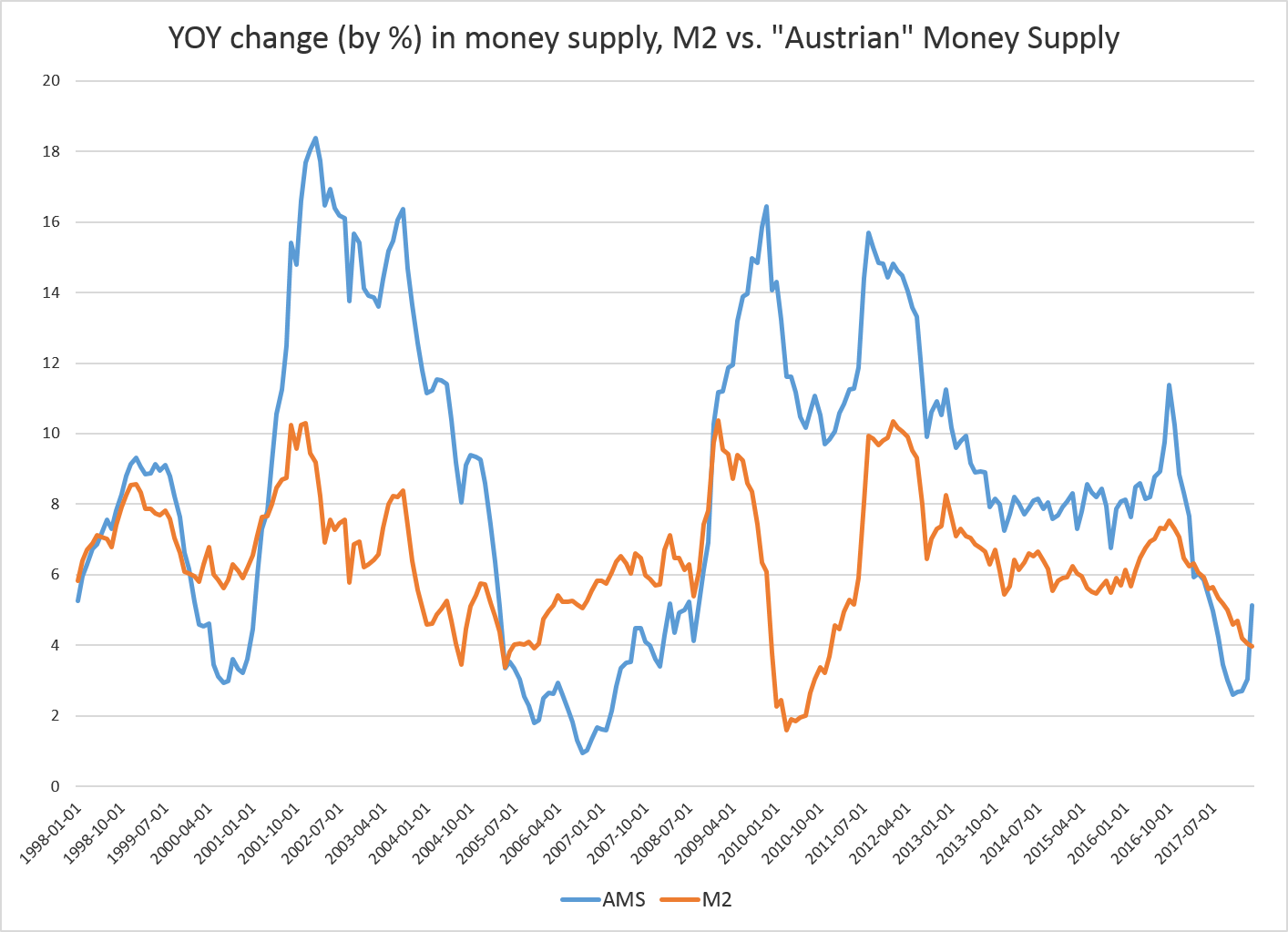In March, growth in the supply of US dollars increased at the highest rate seen in ten months. This comes after a year-long period of falling growth rates, at the end of which money-supply growth fell to a near-ten-year low of 2.6 percent, year over year.

By March of this year, however, growth rates had headed upward again, rising to a year-over-year growth rate of 5.1 percent.
The money-supply metric used here — an "Austrian money supply" measure — is the metric developed by Murray Rothbard and Joseph Salerno, and is designed to provide a better measure than M2. The Mises Institute now offers regular updates on this metric and its growth.
Meanwhile, the more commonly used measure of money supply, M2, continued to experience falling growth rates through the first part of this year. In March, M2 increased 3.9 percent, year over year, making it the smallest increase in M2 in 87-months.
Part of what pushed the Austrian measure of money supply upward was an increase in treasury deposits at the Fed.
The inclusion of deposits at the Fed is a key difference between M2 and the Austrian measure of the money supply, and growth in these deposits has added to the differences seen in growth between M2 and the Austrian measure.
In March, treasury deposits at the Fed hit a 15-month high, rising to 273 billion. The highest level for treasury deposits ever reported occurred in November of 2016, at a total of $394 billion.
What does the trend in money supply indicate?
Historically, a sizable drop in money supply growth rates suggests that a recession is on the horizon — but not on the immediate horizon.
In this graph, provided by RealForecasts.com, we see how dips in the money supply growth rate often precede recessions, but with a lag period of a year or so. In many cases, money supply growth is trending upward again by the time the recession officially begins.

Does the recent downturn and subsequent uptick indicate a recession?
It's difficult to say how long the current boom period will last. Home prices continue to sail upward for now, although we do see volatility in the stock market. Unemployment data doesn't point to anything catastrophic at this time.
Some indicators suggest problems, however. Delinquencies in auto-loan debt continue to trend upward, and growth in commercial loans remains new multi-year lows.

